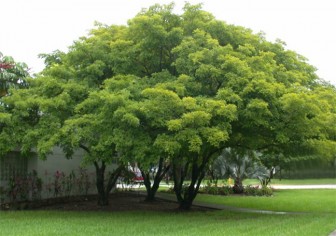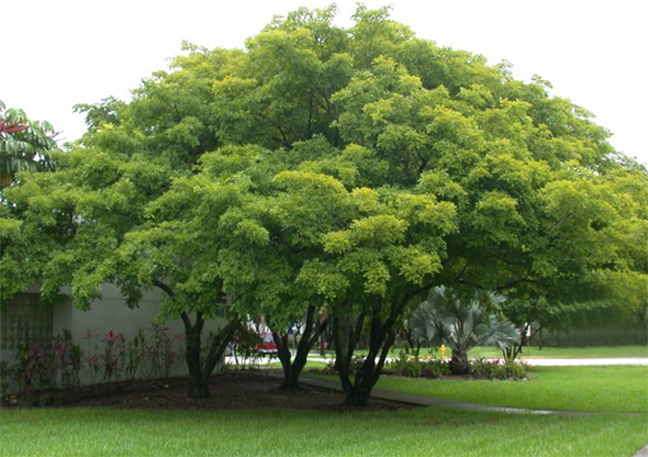LONDON, (Reuters) – Several new companies are betting on the little-known pongamia pinnata tree as a biodiesel feedstock that does not hurt food production, but a decade or more of research and development is still needed to determine its value as a commercial crop.
 Pongamia pinnata, also known as millettia pinnata, is native to Australia, India and parts of southeast Asia. Its oil has so far been used in medicines, lubricants and oil lamps.
Pongamia pinnata, also known as millettia pinnata, is native to Australia, India and parts of southeast Asia. Its oil has so far been used in medicines, lubricants and oil lamps.
Pongamia is attractive because, after six years of cultivation, its oil yield is estimated to rise to around 23 tonnes per hectare per year — almost double yields of 12 tonnes from jatropha, another tree that is a biodiesel feed crop, and 11 tonnes from palm oil.
It has attracted attention as pressure mounts to find sustainable alternative fuels to help meet countries’ renewable energy targets and cut greenhouse gas emissions, without interfering with agricultural production.
But prior experience with jatropha shows that what looks like a promising crop may prove disappointing.
“Unless something has been commercially proven, I would not like to say that this is going to be a success,” said Hema Thakur, industry manager for chemicals, materials and foods at research consultancy Frost & Sullivan.
“I would say pongamia stands a better chance than jatropha, but certain thresholds in terms of yield, production, plantation and commercial conversion to biodiesel would have to be met,” she added.
The medium-sized evergreen pongamia can grow on marginal arid or semi-arid land and is a nitrogen-fixing tree, which means that it helps fertilise the soil.
“The tree and oil composition look basically promising. However, it may take a long time to a large-scale, truly sustainable biofuel production,” said Birger Kerckow, secretariat at the European Biofuels Technology Platform.
A few years ago, jatropha was hailed by investors and scientists as a biofuel alternative to fossil fuels that would not further impoverish developing countries by diverting resources away from food production.
Its high oil yield and ability to grow on marginal land were attractive, but its commercial promise was overstated. Some farmers found that it needed fertiliser to thrive and that its harvesting and processing proved energy-intensive.
POTENTIAL?
Researchers at Australia’s Queensland University said pongamia is a strong candidate to contribute significant amounts of biofuel feedstock.
Another study funded by the Indian government last year said pongamia has “immense potential” for use as biodiesel but that more research is needed on improving optimal oil yields.
Some companies are betting on its commercial potential.
Tree Oils India Ltd has bought uncultivated land in India for pongamia and jatropha plantations, while several Australian firms are investing in pongamia plantations.
“Companies are looking more positively at pongamia, but the challenge is to get the required yield, to get the plant to grow and understand its productivity over a number of years,” Thakur said.
“Another problem is its maturity, which is about five to seven years, compared to jatropha, which is four to five years.”
Gibraltar-based clean technology fund manager Mareeba Oil claims it can produce pongamia crops for biodiesel in three to four years, however.
Mareeba launched a fund last month to raise up to 10 million pounds to plant pongamia trees in Australia.
Its partner Burman Bioenergy has developed methods to cultivate oil from pongamia faster than from jatropha or palm.
“There is a four-year lead-in before we see crops at commercial scale, but that shouldn’t put us off. There is clear demand for a new product which provides good returns and helps us all,” fund director William Redford said.
“Now there is no market as such for millettia (pongamia), but within 18 months there will be lots of plantations established,” he said.
Mareeba has identified an area in north Queensland previously used for tobacco farming for its first plantation. Each tree should produce at least 60 kilograms of oil a year, and there should be over 1,850 trees per hectare, he said.
Some experts say pongamia may be better suited to small-scale production on marginal land, which may put less potential strain on land usage than plantation farming.
India has recognised the potential for small-holders to grow the tree on marginal land and has encouraged them to plant around 25 million trees since 2003 and has bought the seed pods for processing into biodiesel.
“Maybe it has potential. We looked at jatropha but backed away as we couldn’t work out how it would work at scale. Similarly, this is best suited to a small holder environment as a cash crop,” said Philip New, head of BP Biofuels.










